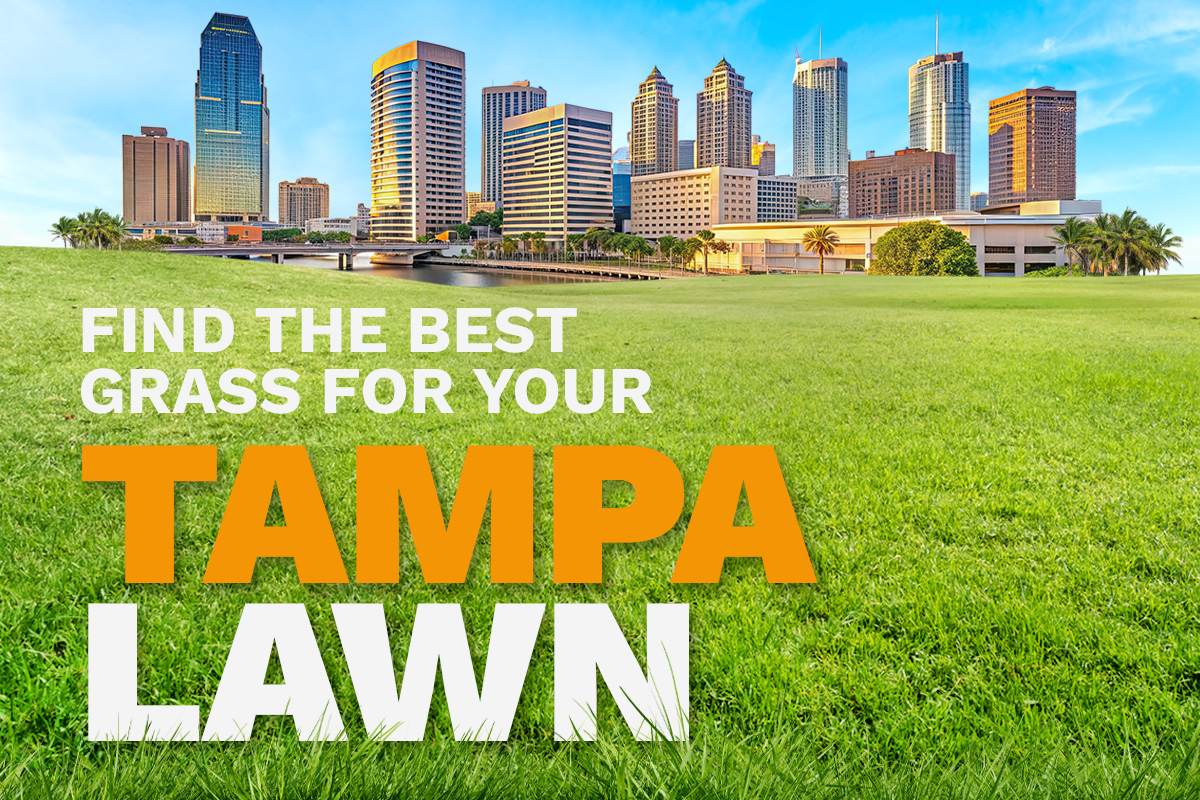
The best grasses for the Tampa/St. Pete region are all warm-season varieties that do well in our hot, humid climate and sandy soil: St. Augustinegrass, Zoysiagrass, centipedegrass, Bermudagrass, bahiagrass, as well as seashore paspalum for coastal areas.
Each has strengths and weaknesses, however, ranging from their ability to handle drought and shade to how well they stand up under heavy use and the salt air.
What Grass is Best For You?

What’s the best grass type for your lawn? That depends on things like how much sun it gets, how much foot traffic it has to endure, and how much work you want to put into it. Plug in your preferences below, and we’ll tell you the grass type you should consider.
🌱 Grass Match Calculator for Tampa
Find the perfect grass type for your Tampa/St. Pete lawn
1. St. Augustinegrass
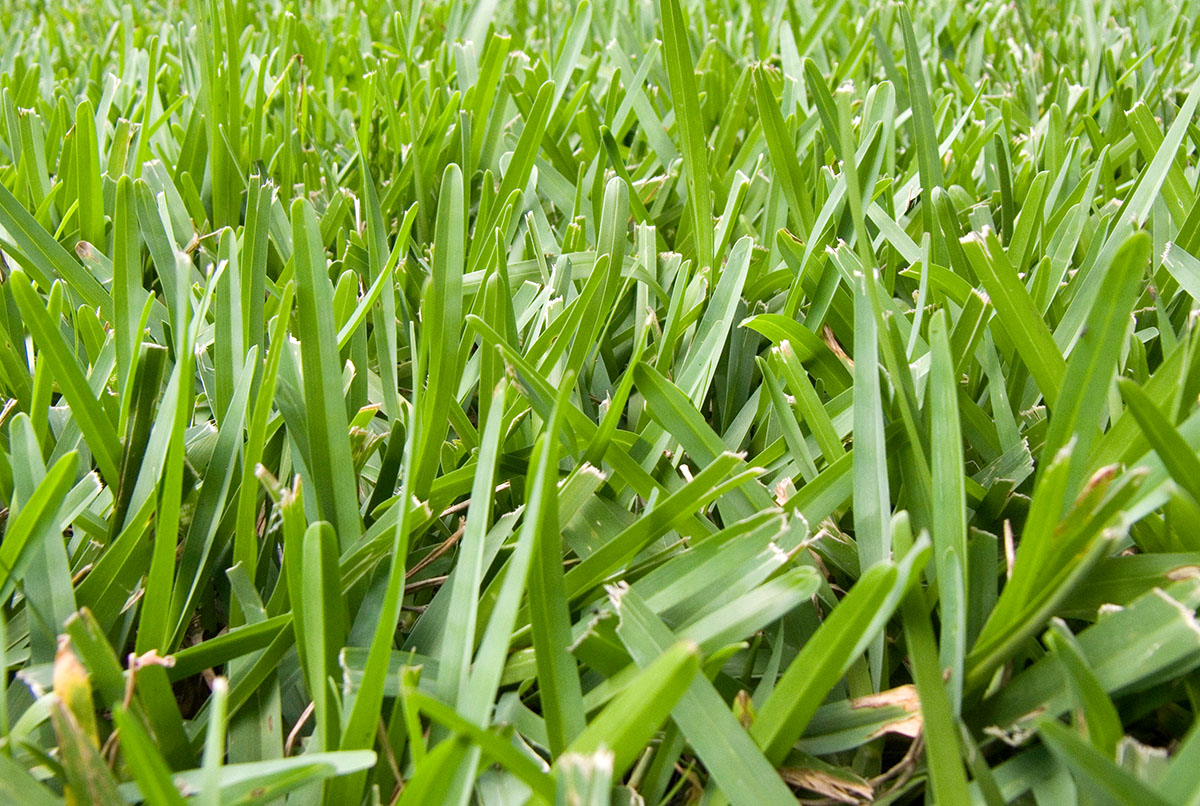
One of the most common grasses on Florida’s West Coast, St. Augustinegrass is prized for creating a thick lawn and its attractive green to blue-green color.
Beyond its aesthetic qualities, it is very practical for Gulf communities. “It grows well in hot humid climates and is salt tolerant, and it stands up well to high traffic,” said Jacob Thompson with A Cut Above Lawn Service in Tampa.
It also handles long dry periods like a champ, tolerates disease pretty well, and is the most shade-tolerant warm-season grass.
On the downside, St. Augustinegrass needs frequent mowing and dethatching, as well as regular fertilization. It’s also a favorite of chinch bugs and doesn’t do as well in yards that are heavily used by pets and kids, or for entertaining.
See Related:
2. Zoysiagrass
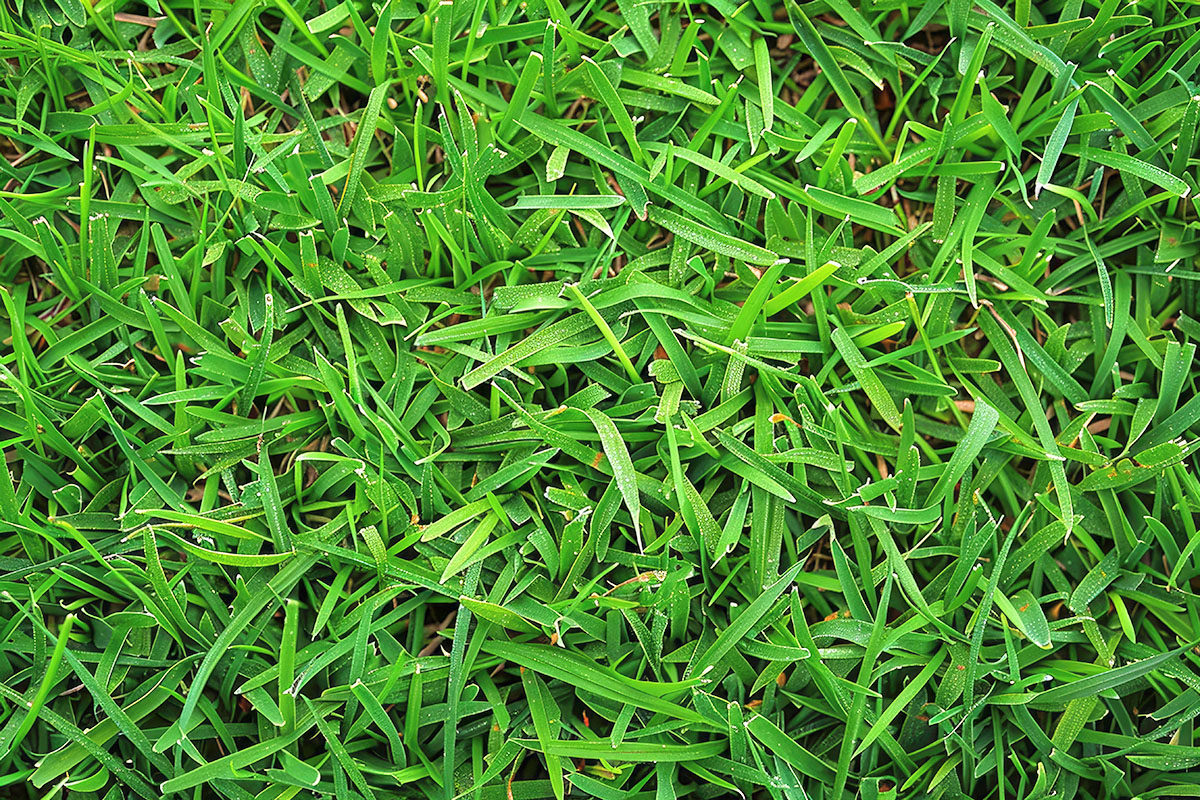
While St. Augustinegrass is king here in the Bay area, Zoysiagrass runs a close second and is gaining popularity because it’s both attractive and durable – good for busy yards.
Think of Zoysia as a high-quality home lawn with the clean, manicured look of a golf course. It forms a unique emerald green mat with excellent wear resistance, and it tolerates salt sprays and shade.
Zoysiagrass also has the best cold weather tolerance among warm-season grasses, so you’ll enjoy the fresh color until late in the season.
It’s not perfect, though. It is a slow grower, expensive to establish as a new lawn, and prone to weeds in its first year. But once it’s established, weeds are no match for Zoysia’s dense, thick, neat cover.
See Related:
- Growing Zoysiagrass: Everything You Need to Know
- How and When to Fertilize Zoysiagrass
- How Much Water Does Zoysiagrass Need?
3. Centipedegrass
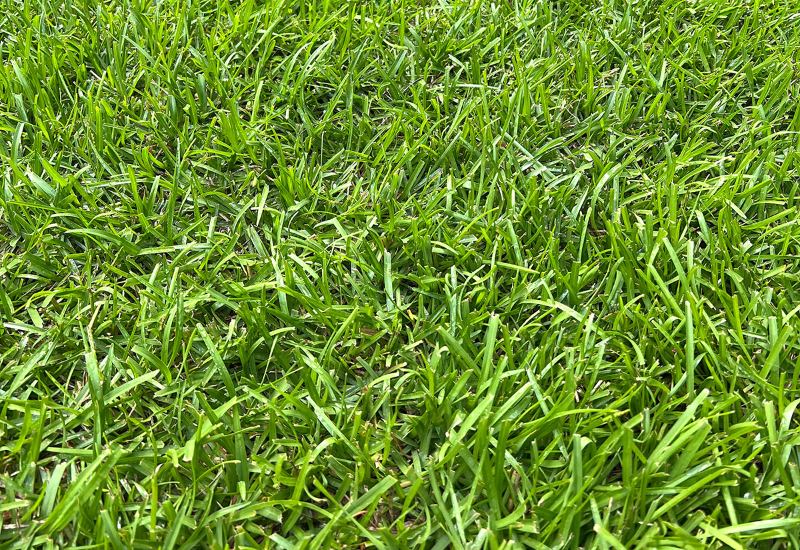
Centipedegrass is another slow-growing option for Tampa/St. Pete. It grows close to the soil, forming light green mats, and can tolerate some shade from shrubs and trees.
Centipede handles Tampa dry spells well and thrives in infertile and acidic soils. But the real super power of centipedegrass is that it’s a low-maintenance turf. It requires little mowing, weeding, and fertilizing. It also does well in shaded yards.
However, centipedegrass is slow to grow and can’t handle foot traffic or salt, so it’s not good for busy yards or coastal areas like Atlantic Beach, Mayport, or Jacksonville Beach. It also doesn’t take well to over-fertilization; overfertilizing makes it susceptible to thatch building and overall decline.
See Related:
4. Bermudagrass
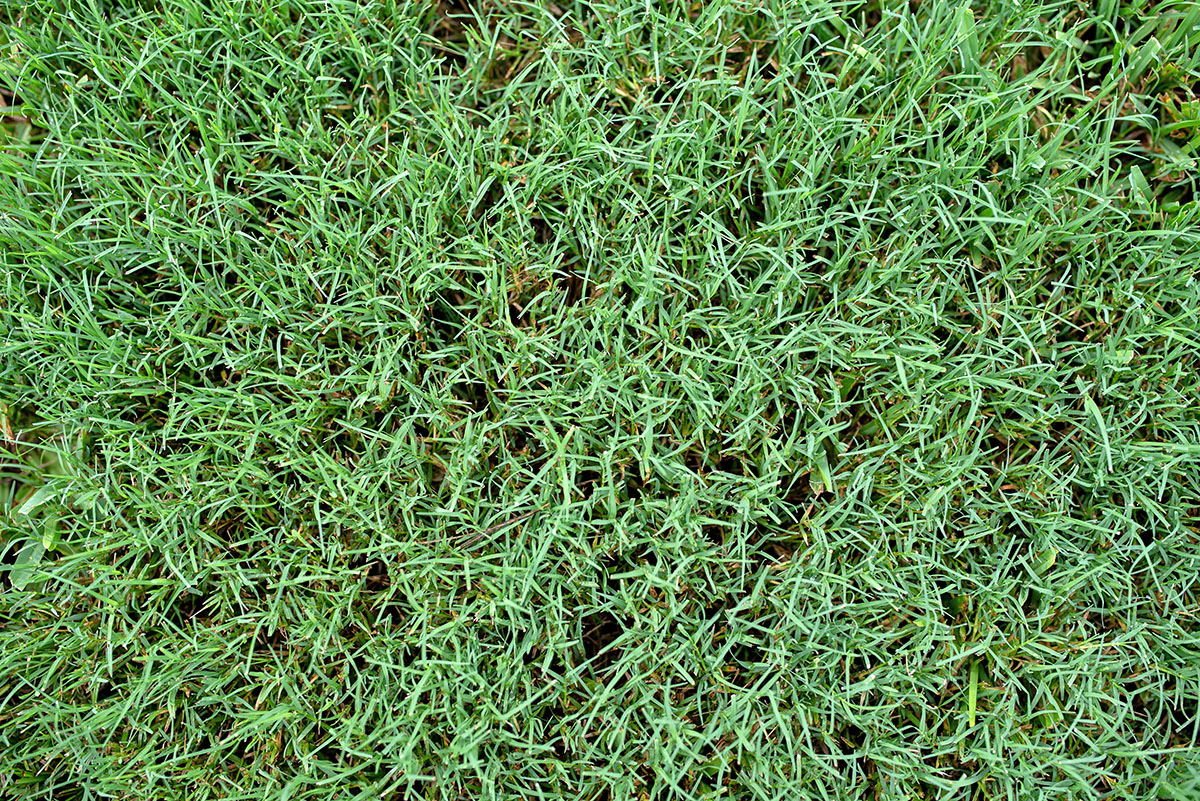
Very popular in golf courses and public parks here in the South, this medium to dark green turfgrass is very hardy, resisting drought, salt, and foot traffic. It also grows in sandy, poor-quality soils.
However, this turfgrass takes work. It grows fast, so it requires frequent mowing and fertilization. Because it doesn’t resist insects and nematodes very well, it also needs to be treated periodically for pests.
See Related: Bermudagrass Guide: Types, Traits, and Care
5. Bahiagrass

Bahiagrass is a slow-growing turfgrass that doesn’t produce a dense lawn or handle foot traffic well. However, it’s a great option for homeowners who want a low-maintenance yard, as it doesn’t need much fertilizer or water.
It’s also fairly inexpensive, which is why many home builders sod new lawns with it.
See Related:
- Bahiagrass Lawn Maintenance Guide
- When to Overseed Bahiagrass in Florida
- When to Fertilize Bahiagrass in Florida
6. Seashore Paspalum
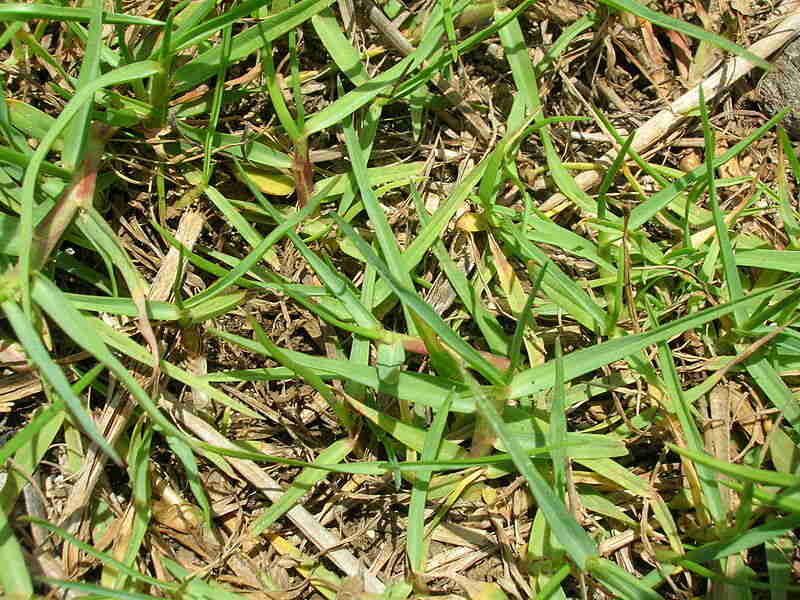
Salt tolerance is seashore paspalum’s best feature, which is why it does so well in yards along the shore. It forms a dense, dark-green turf that easily discourages weeds.
Under the soil, seashore paspalum has a dense root system that allows it to thrive with little water and fertilizer. It has few insect and disease problems but doesn’t tolerate shade.
Best Grass Types for Tampa Compared
St. Augustinegrass
| Pros | Cons |
| Fast-growing, thick grass | Needs to be well watered |
| Thrives in shade | Requires frequent mowing |
| Holds up in drought | Doesn’t stand up well in busy yards |
| Tolerates salt air near coast | Susceptible to diseases |
| Establishes, recovers quickly | Susceptible to pest damage |
Zoysiagrass
| Pros | Cons |
| Attractive golf course look | Establishes slowly |
| Soft under foot | Recovers slowly when damaged |
| Thick, crowds out weeds | Turns brown in drought |
| Handles foot traffic well | Fairly expensive sod |
| Moderate shade tolerance | Prone to thatch buildup |
Centipedegrass
| Pros | Cons |
| Low maintenance | Establishes slowly |
| Minimal fertilization | Damages easily, not good for busy yards |
| Grows in poor, sandy soils | Doesn’t handle salt air well |
| Grows slowly; needs less mowing | Damages easily from overfertilization |
| Resists bugs and diseases |
Bermudagrass
| Pros | Cons |
| Soft grass, comfortable for walking | Doesn’t handle cold well; goes dormant |
| Handles drought | Needs frequent mowing |
| Tolerates salt air; good for coast | Doesn’t like shade |
| Thrives in full sun | Spreads aggressively to flower beds |
| Requires just moderate watering | Develops thatch |
Bahiagrass
| Pros | Cons |
| Requires very little maintenance | Coarse, less attractive appearance |
| Tolerates drought very well | Doesn’t handle traffic well |
| Thrives in poor, sandy soil | Establishes slowly |
| Stands up well to high heat | Doesn’t like shade |
| Doesn’t develop much thatch | Produces tall, weedy looking seed heads |
Seashore paspalum
| Pros | Cons |
| Handles salt air very well | Requires a fair amount of maintenance |
| Thrives in hot, humid weather | Establishes slowly |
| Resists drought | Will go dormant fast in cold weather |
| Grows densely | Handles only moderate shade |
| Stays green longer than other grasses | Damages easily if cut with dull mower blade |
How to Keep Your Tampa/St. Pete Turf Green

Picking a grass variety for your Bay area yard is a very personal choice that depends on your aesthetic, your lifestyle, how much maintenance you want to do, and other factors. Once you pick your grass, keep it looking its best with one of LawnStarter’s Tampa lawn care pros or St. Petersburg pros.
We also have local lawn care pros in Clearwater, Oldsmar, Pinellas Park — and all across the Bay area. Call, click, or book mowing in our app.
An editor for LawnStarter since 2022, Tom McNiff has lived in Central Florida for more than 30 years. He’s the proud owner of a hard-earned St. Augustinegrass lawn that requires a lot of TLC but also draws a lot of looks.
Main Image: Illustration by Whitney Lehnecker / LawnStarter; Adobe Stock photos